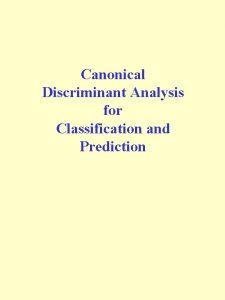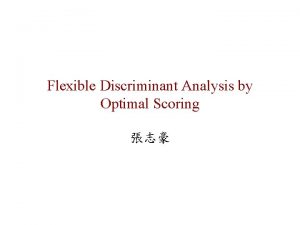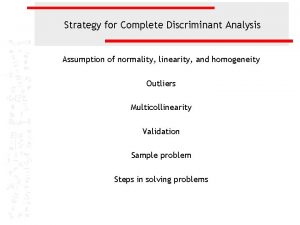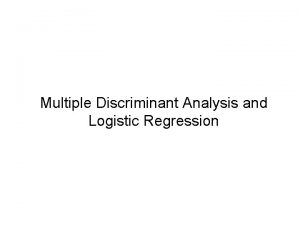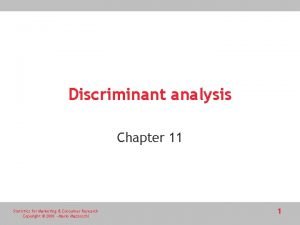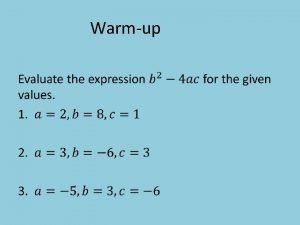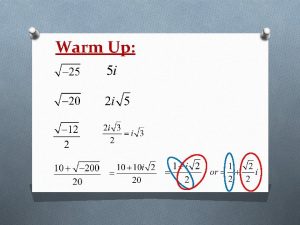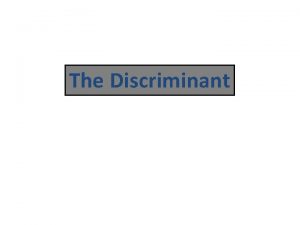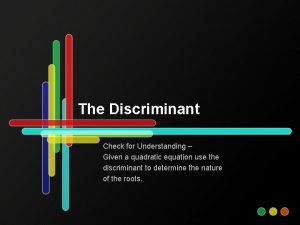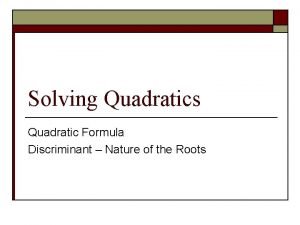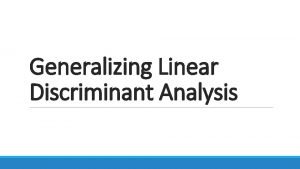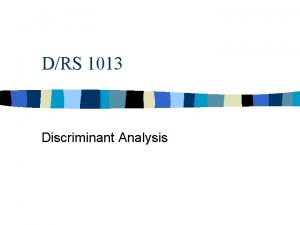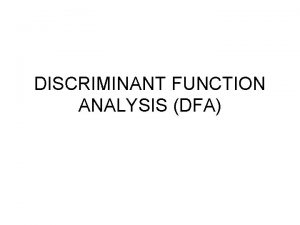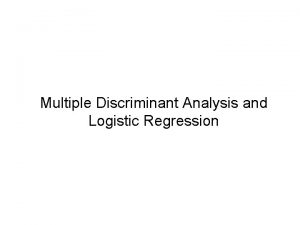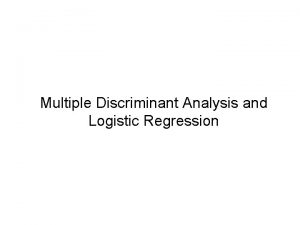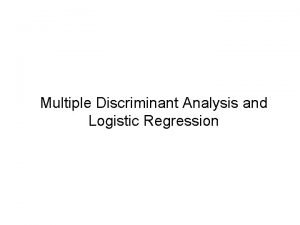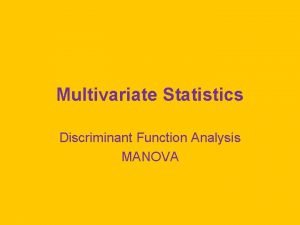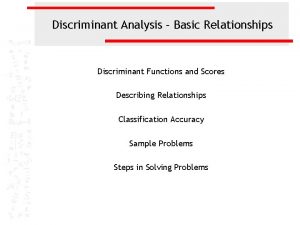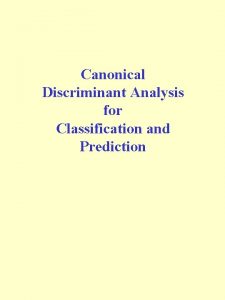Linear Discriminant Analysis Linear Discriminant Analysis n n














- Slides: 14

Linear Discriminant Analysis

Linear Discriminant Analysis n n n Why n To identify variables into one of two or more mutually exclusive and exhaustive categories. n To examine whether significant differences exist among the groups in terms of the predictor variables. What n The analysis helps determine what predictor variables contribute most to intergroup differences. n It then classifies cases to one of the groups based on the values of the predictor variables. How n Using a combination of MANOVA, PCA and MLP.

LDA n Assumptions n Absence of outliers n Equal samples size n Many data n Homogeneity of variance-covariance n Linear relationship n No multicolinearity

LDA n Toy example IVs DVs =X

LDA n First step: Significance testing of the overall classifier in order to know if a set of discriminant functions can significantly predict group membership or not n Second step: Significance testing for each discriminant function. n Third step: Computation of the (standardized, unstandardized) discriminant functions

LDA - Overall Testing n Sum of Square and Cross Product SSCP=

LDA - Overall Testing n Canonical Correlation Matrix n Error and hypothesis matrices

LDA - Overall Testing n n Computing W (WLR) where s = min(df, q), lk is kth eigenvalue extracted from Hi. E-1 and |E| (as well as |E+Hi|) is the determinant. The overall test is significant

LDA - Individual Testing n Eigenvalues and eigenvectors decomposition of the matrix: E-1 H= PCA E-1 H

LDA - Individual Testing n Canonical Discriminant Analysis Squared canonical correlation (Can also obtained from the eigenvalues of the correlation matrix R) Canonical correlation

LDA - Individual Testing n Significance test for the canonical correlations n A significant output indicates that there is a variance share between IV and DV sets Procedure: n n We test for all the variables (m=1, …, min(p, q)) If significant, we removed the first variable (canonical correlate) and test for the remaining ones (m=2, …, min(p, q) Repeat

LDA - Individual Testing n Significance test for the canonical correlations Since all canonical variables are significant, we will keep them all.

LDA – Projection of the solution P=VY Second discriminant function First group Second group Third group First discriminant function

LDA – Discriminant Functions D 1 D 2 D 3 b 0 b 1 b 2 b 3 b 4 n Class membership is given by: Max(D 1, D 2, D 3) n Example x=(86, 6, 35, 6. 5); n n n D 1= 122. 817 (MAX) D 2= 103. 706 D 3= 105. 642
 Canonical discriminant analysis
Canonical discriminant analysis Linear discriminant analysis example
Linear discriminant analysis example Discriminant analysis assumptions
Discriminant analysis assumptions Logistic regression and discriminant analysis
Logistic regression and discriminant analysis Multiple discriminant analysis
Multiple discriminant analysis Hair et al
Hair et al Discriminant analysis marketing
Discriminant analysis marketing Discriminant for quadratic equation
Discriminant for quadratic equation Types of discriminant solutions
Types of discriminant solutions Concurrent validity nedir
Concurrent validity nedir Minus b formula
Minus b formula When the discriminant is negative
When the discriminant is negative Find the discriminant of the quadratic expression
Find the discriminant of the quadratic expression Understanding the discriminant
Understanding the discriminant Find the discrimant
Find the discrimant
